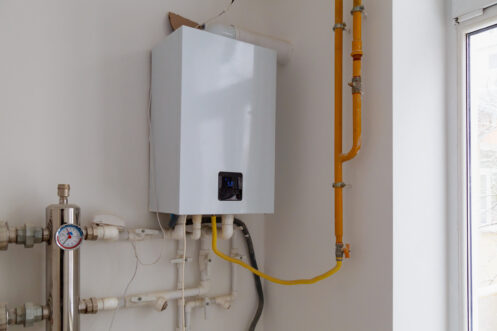We have stumbled on this great article relating to Tips on Maintaining a Water Heater down the page on the net and concluded it made sense to quickly share it with you on this site.

Hot water is essential for daily comfort, whether it's for a revitalizing shower or washing dishes. To guarantee your warm water system runs effectively and lasts longer, normal upkeep is key. This short article gives useful ideas and understandings on how to maintain your home's hot water system to prevent disturbances and costly repair services.
Intro
Keeping your home's hot water system may appear overwhelming, but with a couple of easy steps, you can guarantee it operates efficiently for several years to come. This guide covers whatever from recognizing your hot water system to DIY maintenance ideas and recognizing when to call in expert assistance.
Relevance of Maintaining Your Hot Water System
Routine upkeep not just extends the lifespan of your hot water system yet also guarantees it runs efficiently. Overlooking maintenance can cause lowered effectiveness, greater power costs, and also early failure of the system.
Signs Your Warm Water System Needs Upkeep
Recognizing when your warm water system requires focus can stop significant problems. Keep an eye out for signs such as inconsistent water temperature, strange sounds from the heating system, or corroded water.
Comprehending Your Hot Water System
Before diving into maintenance tasks, it's valuable to recognize the standard parts of your hot water system. Generally, this includes the water heater itself, pipes, anode rods, and temperature level controls.
Month-to-month Upkeep Tasks
Routine regular monthly checks can help catch minor concerns prior to they rise.
Purging the Water Heater
Flushing your water heater removes sediment build-up, boosting performance and extending its life.
Checking and Changing Anode Rods
Anode rods prevent deterioration inside the container. Examining and replacing them when broken is vital.
Checking and Changing Temperature Settings
Readjusting the temperature level settings guarantees optimal efficiency and security.
DIY Tips for Maintenance
You can execute a number of maintenance tasks on your own to maintain your hot water system in leading problem.
Checking for Leaks
Consistently examine pipes and links for leaks, as these can lead to water damages and higher bills.
Examining Stress Relief Valves
Examining the stress relief valve guarantees it works correctly and protects against excessive stress accumulation.
Insulating Pipelines
Protecting hot water pipelines decreases heat loss and can conserve energy.
When to Call a Specialist
While DIY upkeep is helpful, some issues require professional know-how.
Complex Problems Requiring Specialist Help
Instances include significant leaks, electric problems, or if your hot water heater is regularly underperforming.
Routine Expert Upkeep Perks
Professional upkeep can include complete inspections, tune-ups, and making certain compliance with safety and security standards.
Final thought
Regular maintenance of your home's warm water system is important for performance, longevity, and expense financial savings. By adhering to these suggestions and recognizing when to seek expert aid, you can guarantee a trusted supply of hot water without unexpected disruptions.
How to Maintain an Instant Hot Water Heater
Before tinkering with your hot water heater, make sure that it’s not powered on. You also have to turn off the main circuit breaker and shut off the main gas line to prevent accidents. Also turn off the water valves connected to your unit to prevent water from flowing into and out of the appliance. 2. When you’re done, you have to detach the purge valves’ caps. These look like the letter “T” and are situated on either side of the water valves. Doing so will release any pressure that has accumulated inside the valves while at the same time avoid hot water from shooting out and burning your skin. 3. When the purge valves’ caps are removed, you have to connect your hosing lines to the valves. Your unit should have come with three hoses but if it didn’t, you can purchase these things from any hardware or home repair shops. You can also get them from retail stores that sell water heating systems. Read the user’s manual and follow it to complete this task properly. When the hosing lines are connected, open the purge port’s valves. 4. You should never use harsh chemical cleaners or solutions when cleaning your unit. Make use of white vinegar instead. It should be undiluted and you’ll probably use about 2 gallons. 5. Now flush your water heater. This task should probably take about 40 minutes. We can’t give you specific directions for this because the procedure is carried out depending on the type, model and brand of your heater. With that being said, refer to the user’s manual. 6. When you’re done draining the unit, you have to turn off the purge port valves again. Remove the hosing lines that you earlier installed on each of the water valves. Put the valve caps (purge port) back in their respective places and be very careful so as not to damage the rubber discs that are found inside these caps. 7. Now that everything’s back in place, check your user’s manual again to find out how to reactivate your water heating system. 8. Once it is working, turn one of your hot water faucets on just to let air pass through the heater’s water supply pipes. Leave the tap on until water flows smoothly out of it. https://www.orrplumbing.com/blog/2014/september/how-to-maintain-an-instant-hot-water-heater/

As an enthusiastic reader on Water Heater Maintenance Tips You Can't Afford to Forget, I figured sharing that excerpt was a good thing. Sharing is good. You never know, you may be helping someone out. We recognize the value of reading our article about How to Maintain a Hot Water Heater in a Few Simple Steps.
Book Services